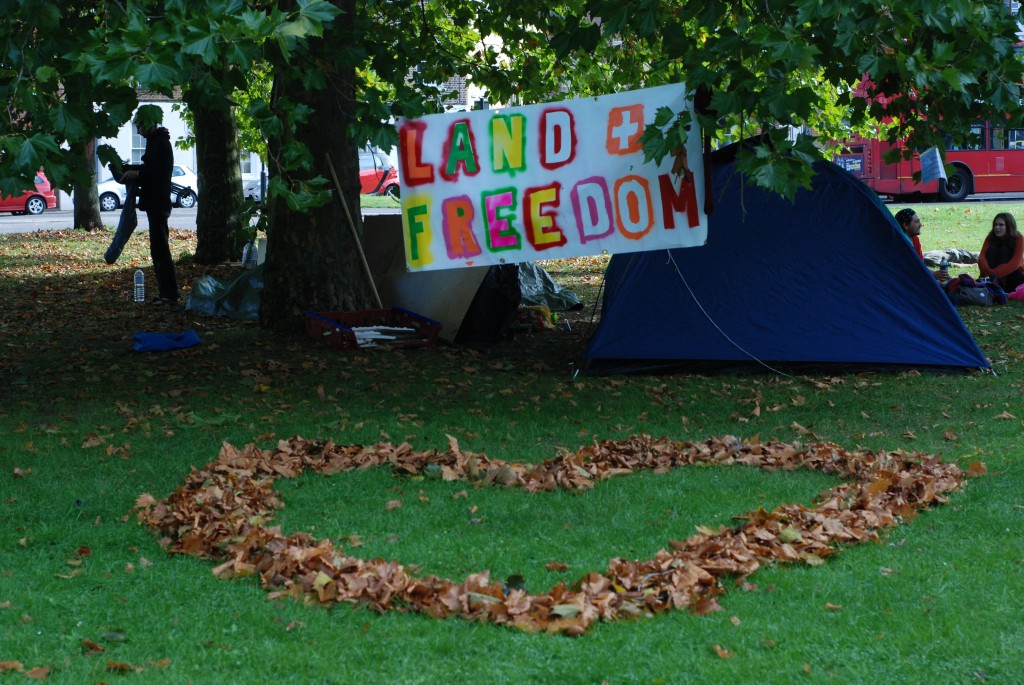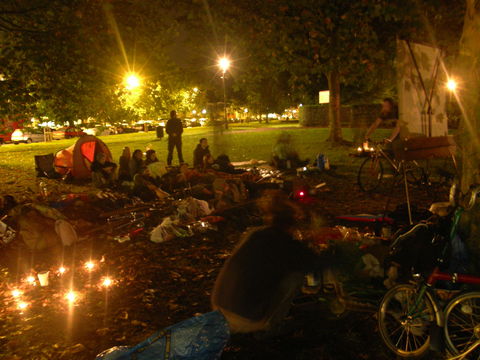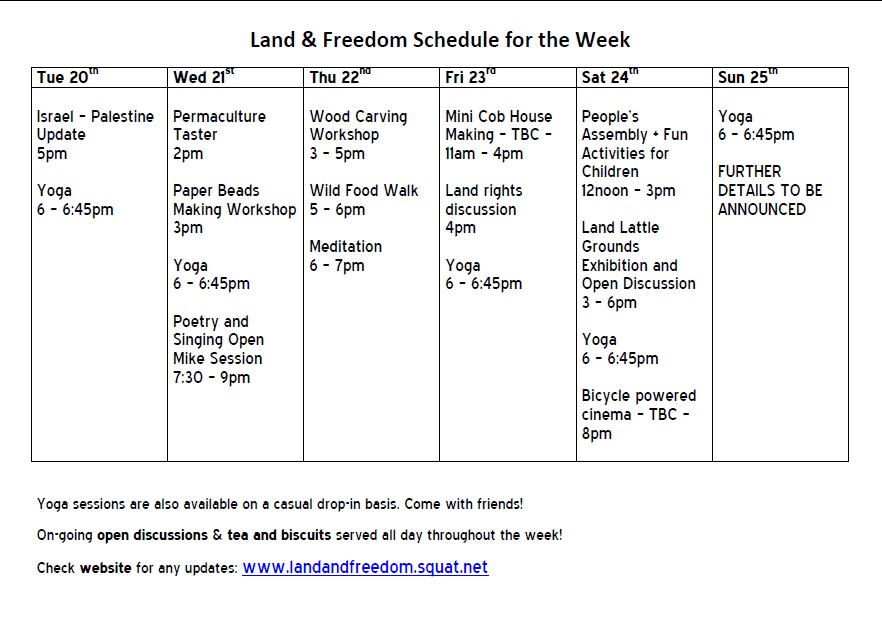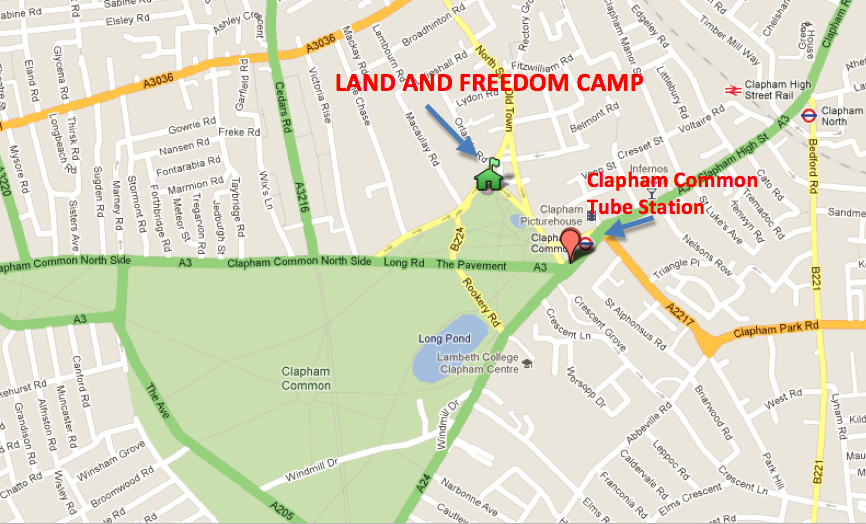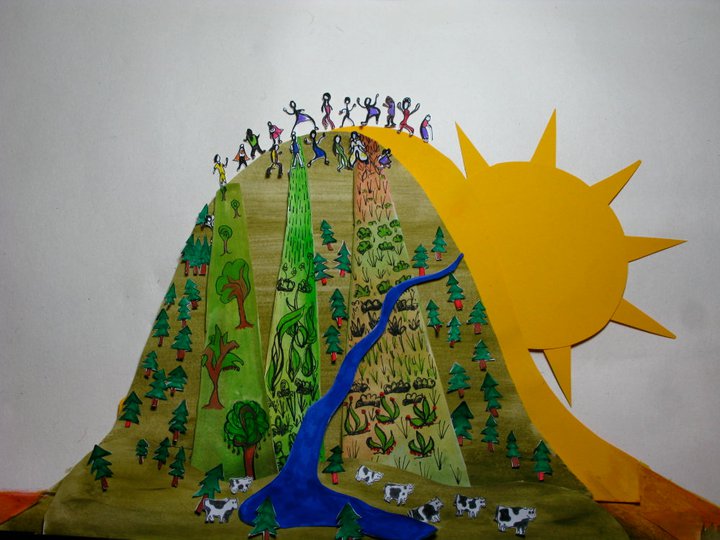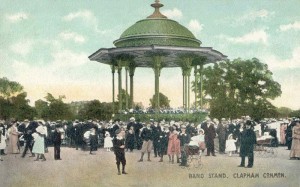Copied from this website
As the government grants ramblers limited rights to roam, Ellen Kemp takes a detailed look at land ownership, wealth and power in Britain today.
Land ownership is not an issue that the Left discusses very much at all. The Parliament of England and Scotland have given ramblers a limited right to roam across open countryside.
The fact of increased home ownership has seen the wealth of the middle classes appreciate enormously in recent decades. Since 1979 home ownership has increased from 57% to 70%. This state of affairs is contingent on the amount of land available for house building. The state’s planning laws means that land for housing is sold at over-inflated prices by the land-owning classes. For those at the bottom of the social scale even being able to rent or buy a small home is becoming increasingly difficult. As one campaigning organisation (www.thelandisours.org.uk ) states, everyone should have the right to a home, the right to roam, and the right to enjoy the resources of the land.
The growth of home ownership should not however detract from an enquiry into who really owns land in the UK. The land-owning class in the UK is hugely wealthy, secretive, and wants to deny you and I access to and use of the land that they own.
On 10 January Peter Snow and his son Dan in a BBC programme called ‘Whose Britain is it anyway?’ sought to unravel the mysteries of land ownership in the UK. The programme was largely based on exhaustive research by Ken Cahill whose book Who Owns Britain was published in 2001.
Some facts and figures
The largest institutional landowners are The Forestry Commission with 2.4 million acres, then the Ministry of Defence with 750,000 acres followed by the National Trust with 550,000 acres. The Church of England only owns 135,000 acres, down from over 1.5 million acres in the 1870s. It seems likely that parish vicars took advantage of their control of local church land and sold off vast tracts for personal gain. The Crown Estate owns nearly 400,000 acres, and is worth over £5 billion, with profits in the region of £180 million per annum. This body owns land ‘in the right of the crown’ and pays its profits into the coffers of the exchequer, which in return repays some of the income to the Monarchy for its annual expenses, that is the Civil List.
In theory the monarchy could claim back the Crown Estate for its personal use at any time. The Prince of Wales has an institutional estate – the Duchy of Cornwall – of 141,000 acres; this includes freehold on much of Kennington area of London worth an estimated £500 million. The Queen is also the Duke of Lancaster and the size of this estate is estimated to be 50,000 acres. Finally the Queen has private lands of another 75,000 acres, and this includes the Balmoral estate in Scotland. Remember that until very recently the Windsors paid no tax on income from their lands.
The largest private landowner is the Duke of Buccleach with 270,000 acres; and the wealthiest is the Duke of Westminster with 140,000 acres in the UK, 400,000 abroad, but most importantly 300 acres of the richest real estate in the world in central London. In the 1870s his predecessor the Marquess of Westminster, who was one of the wealthiest persons in England, held only 20,000 acres. Impressed by his wealth Queen Victoria made him a Duke.
The family can trace its roots back to a Norman invader Hugh de Gras Veneur who seized land in Cheshire after 1066. The argument of Gerard Winstanley concerning the tyranny of the ‘Norman Yoake’ and their control of the land still rings true!
There are in the UK over 40,000 people who own land worth at least £1 million. Who many of these people are and how they acquired their land is a mystery. Most figures concerning private land ownership are only estimates because 50% of the land in the UK is not registered. The Land Registry only registers land when it is sold. Those who have held estates for generations are under no obligation to tell anyone about their holdings. How did this state of affairs come about?
Some history
The Norman conquest of England in 1066 saw all land taken under the ownership of the monarchy. To this day the monarchy – in theory at least – owns all the land. The Normans changed the ownership of land with the King giving land as tribute to Norman lords and barons and depriving the Saxons. The Domesday book was the first audit of land. And the resulting system of feudalism exacted free labour, goods and produce and free military service to the land-owning classes for the rest of the middle ages.
The Diggers sought to challenge the ‘Norman Yoake’ and return the land to common people. As one Diggers’ pamphlet proclaimed ‘Seeing that the common people of England by joint consent of person and purse have caste out Charles our Norman oppressor, we have by this victory recovered ourselves from under this Norman yoake…and the land is to be held no longer from the use of them [the commoners]’ Their attempts to build communal farms were persecuted by local landowners and the Diggers were dispersed. The Diggers obtained nothing from the new Republic which eagerly sold off Church and Royalist land – the spoils of war – to its own loyal aristocrats. The redistribution of land was so enormous that Charles II under the Restoration could not undo the redefined status quo.
In the 1870s a political argument took place on the question of land ownership between the radical liberal John Bright and the conservative aristocrat Lord Derby. Bright had argued that very few – about 150 aristocrats – owned half of England and that this group used the Corn Laws to stop the importation of cheaper corn. For Bright this amounted to a subsidy to this class. Lord Derby -himself a very large landowner -claimed that land ownership was much more widespread and consequently Bright was wrong. The result was an enquiry into land ownership.
In 1872 the British Government published The Return of the Owners of Land, which is only the second audit of land to have taken place in British history, the other being the Domesday book in 1086. After 2 years of gathering all the information the returns found that 1 million people owned freeholds, about 5% of the population. The ten leading Dukes in the Kingdom owned over 100,000 acres each with the Duke of Sutherland owning 1,350,000 acres. The Duke of Northumberland owned 186,000 acres then and still owns 132,000 acres. Both sides claimed victory, and the land-owning class realised that they had given up too much information about their assets and wealth.
Since 1872 there has not been an audit of the land and the state effectively screen landowners from any enquiry into their activities, and their colossal wealth. The Royal Commission into the wealth of Britain set up by the Labour government just before Thatcher hoped to examine land ownership but found a paucity of information on the question. Thatcher abolished the commission on coming to power. None of the major political parties in the UK has any policy to redistribute land, with one exception; the Green Party.
This situation is indicative of the cosy relationship that those whose arses grace the seats in the Palaces of Westminster have with the land-owning elite. On the other hand the Green Party believes that: ‘Land, the primary source of all real wealth, is the common heritage. We acknowledge that land is held in trust by human society on behalf of other species and future generations, and that land should not be treated as a capital investment nor traded for speculative profit.’ One only hopes that Jonathan Porritt CBE; Charles Windsor’s environmental advisor inculcates this advice into the prince’s ear!
Wealth, Land and Power
Lord Derby declared in 1881: “The object which men aim at when they become possessed of land in the British Isles may, I think, be enumerated as follows. One political influence; two, social importance, founded in territorial possession, the most visible and unmistakable form of wealth; three power exercised over tenantry; the pleasure of managing, directing and improving the estate itself; four residential enjoyment, including what is called sport; five the money return – the rent”.
Derby’s point of view concerning land was not only indicative of the time, but certainly abounds amongst landowners today. The Land Reform Act (Scotland) of 2003 that gives Scots the right to roam and also the right for communities to purchase land that would benefit them. It caused strong reactions from the land-owning elite, with one of them commenting that ‘the only countries in the world left with this kind of thing are North Korea and Cuba’.
Over the centuries the land-owning class has created vast wealth for itself from its holdings. This wealth has been derived from agriculture, forestry, rents, mining and hunting and sport, and since the later part of the 20th century tourism.
They have always pursued their profitable goals against the common interest and at the expense of ordinary people. The Highland Clearances led to the displacement of 500,000 Highland peasants and crofters in the early part of the 19th century, being replaced by sheep.
Crofters were denied rights to seaweed, or access to summer pasture for their animals. Enclosure of England’s Commons and wasteland that began at the time of the Diggers was to last into middle of 19th century. Enclosure occurred at a greater rate in those counties where profits were larger, in particular for produce demanded for the ever-expanding urban industrial areas. Similarly today it is advantageous to grow for profit. In this case not what can be sold, but what is subsidised. Research by Oxfam estimates that the seven largest growers of cereals receive nearly £900 a day in subsidy.
This includes the good old Duke of Westminster. In 2005 figures for the distribution of subsidies were published for the first time, the Duke received £799,000 over 2 years. The highest payout was to a Sir Richard Sutton who received £2.2 million. Some small farmers received only £25 and one received 31p! The elite only pay council tax on their houses as everyone has to do, but nothing on the vast assets they own.
The large landowners who own the estates where hunting and shooting are a major source of revenue have always been keen to keep the public out. The laws of trespass and the use of a private police force – the gamekeepers – have tried to stop people from using land, walking across land and using products from the land. There were battles between gamekeepers and ramblers in the Peak District in the 1930s. At times of economic misery in the countryside in the 19th century poachers and gamekeepers were locked into a war. Many poachers who were caught were exported to Australia never to return.
The control of land needs to be wrestled away from the land-owning elite and land made available for houses, to resurrect the environment and to enable access for all. The principles of Winstanley and the Diggers still hold true today: ‘Therefore we require and resolve to take both the common lands and the common woods to be a livelihood for us, and look upon you as equal with us, not above us, knowing very well that England, the land or our nativity, is to be common treasury of livelihood to all, without respects of persons’
Ellen Kemp

